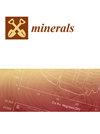火星上的石膏盖尔陨石坑的详细视图
IF 2.2
4区 地球科学
Q2 GEOCHEMISTRY & GEOPHYSICS
引用次数: 0
摘要
石膏是火星盖尔陨石坑的一种常见矿物,目前正由火星科学实验室(MSL)的好奇号漫游车进行探测。在本文中,我们总结了从陨石坑北部护城河区(Aeolis Palus)的最低层到围绕中心山峰 Aeolis Mons(非正式地称为夏普山)发育的沉积丘下坡约 0.8 千米地层剖面中石膏与其他硫酸盐矿物(贝闪石、无水石膏、叶蜡石、星基石和铁闪石)的关联。该分析基于好奇号上 CheMin X 射线衍射仪器的结果,并辅以漫游车多功能仪器套件的信息。石膏出现的频率不如含水量较低的硫酸钙盐出现的频率高,在大多数情况下,这可能是因为石膏脱水后变成了贝桑石,也可能变成了无水石膏。所有这三种钙硫酸盐相经常一起出现,并与其他硫酸盐一起形成混合集合体,这证明在寒冷、干燥的星球上存在着有限的平衡。在几乎所有的样本中,至少存在一种钙硫酸盐矿物,只有一个非常有限的区间,主要的硫酸盐矿物是硫铁矿,这意味着在盖尔陨石坑历史上更晚的时期,地下水的酸性更强。虽然从轨道上观测到的结果显示表面富含硫酸盐,但盖尔陨石坑目前活跃的深色玄武岩沙丘只有少量单一的硫酸盐矿物--无水石膏。盖尔陨石坑提供了迄今为止火星上最完整的矿物学分析,但手头的数据表明,盖尔陨石坑矿物学并不是一个适用于整个火星的蓝图。火星 2020 任务同时对杰泽罗陨石坑进行的研究,以及与据信是火星上最广泛的石膏沉积地--北极冰盖的沙丘地带--的比较,显示出显著的多样性。揭开火星上石膏和其他硫酸盐的故事才刚刚开始。本文章由计算机程序翻译,如有差异,请以英文原文为准。
Gypsum on Mars: A Detailed View at Gale Crater
Gypsum is a common mineral at Gale crater on Mars, currently being explored by the Mars Science Laboratory (MSL) rover, Curiosity. In this paper, we summarize the associations of gypsum with other sulfate minerals (bassanite, anhydrite, jarosite, starkeyite, and kieserite) from the lowest levels of the crater’s northern moat zone (Aeolis Palus) up through ~0.8 km of the stratigraphic section in the lower slopes of the sedimentary mound developed around the central peak, Aeolis Mons (informally, Mount Sharp). The analysis is based on results from the CheMin X-ray diffraction instrument on Curiosity, supplemented with information from the rover’s versatile instrument suite. Gypsum does not occur with the same frequency as less hydrous Ca-sulfates, likely, in most cases, because of its dehydration to bassanite and possibly to anhydrite. All three of these Ca-sulfate phases often occur together and, along with other sulfates, in mixed assemblages that are evidence of limited equilibration on a cold, dry planet. In almost all samples, at least one of the Ca-sulfate minerals is present, except for a very limited interval where jarosite is the major sulfate mineral, with the implication of more acidic groundwater at a much later time in Gale crater’s history. Although observations from orbit reveal a sulfate-rich surface, currently active dark basaltic dunes at Gale crater have only small amounts of a single sulfate mineral, anhydrite. Gale crater has provided the most complete mineralogical analysis of a site on Mars so far, but the data in hand show that Gale crater mineralogy is not a blueprint with planet-wide application. The concurrent study of Jezero crater by the Mars 2020 mission and comparisons to what is believed to be the most extensive deposit of gypsum on Mars, in the dune fields at the north polar ice cap, show significant diversity. Unraveling the stories of gypsum and other sulfates on Mars is just beginning.
求助全文
通过发布文献求助,成功后即可免费获取论文全文。
去求助
来源期刊

Minerals
MINERALOGY-MINING & MINERAL PROCESSING
CiteScore
4.10
自引率
20.00%
发文量
1351
审稿时长
19.04 days
期刊介绍:
Minerals (ISSN 2075-163X) is an international open access journal that covers the broad field of mineralogy, economic mineral resources, mineral exploration, innovative mining techniques and advances in mineral processing. It publishes reviews, regular research papers and short notes. Our aim is to encourage scientists to publish their experimental and theoretical results in as much detail as possible. There is no restriction on the length of the papers. The full experimental details must be provided so that the results can be reproduced.
 求助内容:
求助内容: 应助结果提醒方式:
应助结果提醒方式:


